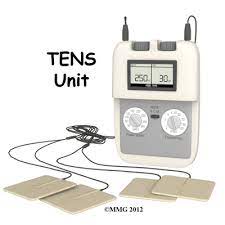The purpose of this systematic review was to summarize the effect of transcutaneous electrical nerve stimulation (TENS) for management of limb spasticity. Randomized controlled trials were searched using electronic databases through July 2015. Fourteen randomized controlled trials were included, involving 544 participants.

Intervention protocols fit within three categories: 1) TENS vs. no TENS or placebo TENS (n = 7), 2) TENS vs. another TENS protocol or another intervention for spasticity management (n = 7), and 3) TENS as an adjunct to another intervention for spasticity management (n = 4). There was level 1 and 2 evidence for TENS improving spasticity-related outcome measures within the International Classification of Functioning, Disability, and Health domains of body structure and function (e.g., Modified Ashworth Scale) as well as activity (e.g., gait). Better responses in outcome measures in the International Classification of Functioning, Disability, and Health activity domain were seen when TENS was used in combination with active therapy (e.g., exercise and task-related training) vs. as a single therapeutic modality.
 Blog de Fisioterapia Fisioterapia
Blog de Fisioterapia Fisioterapia



